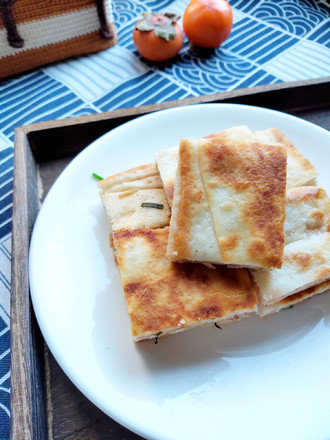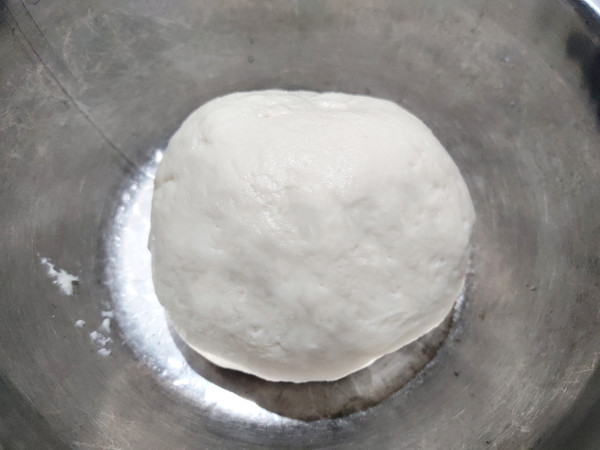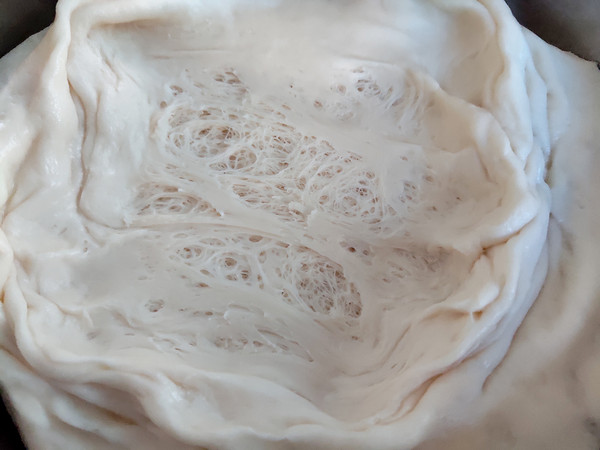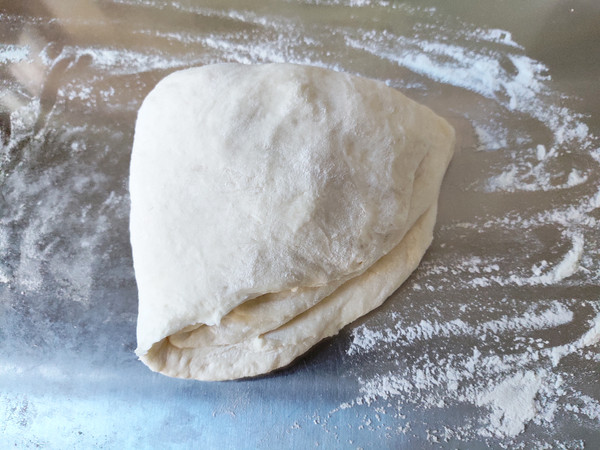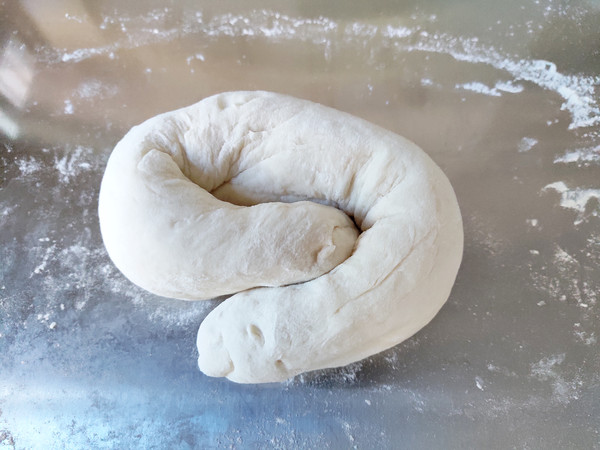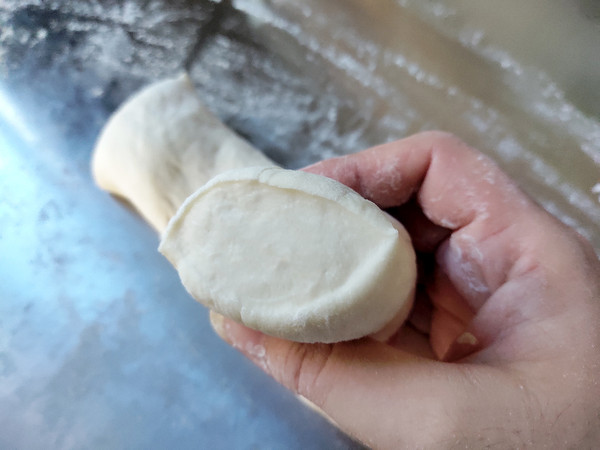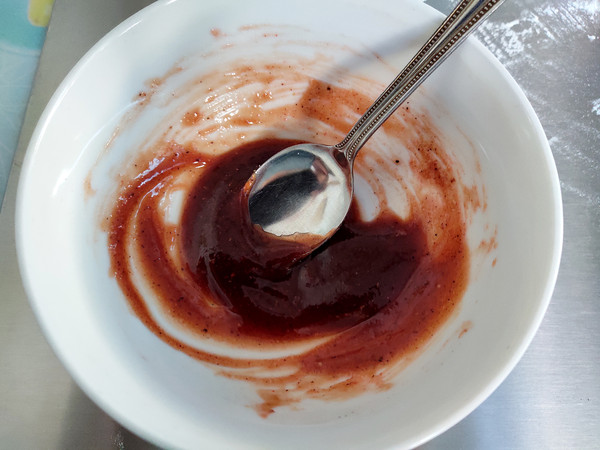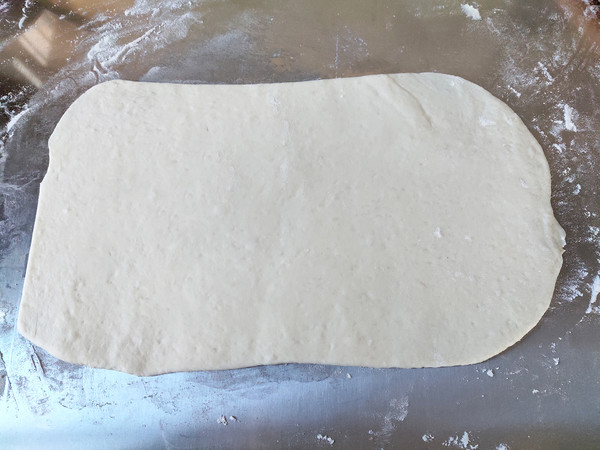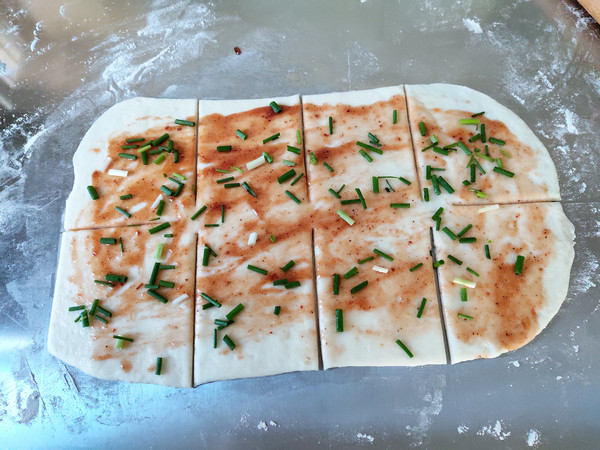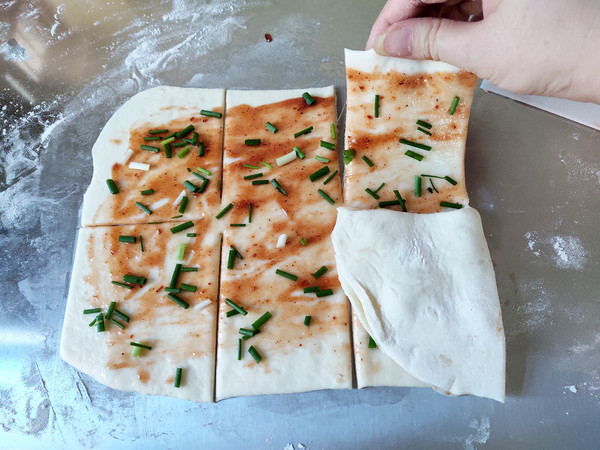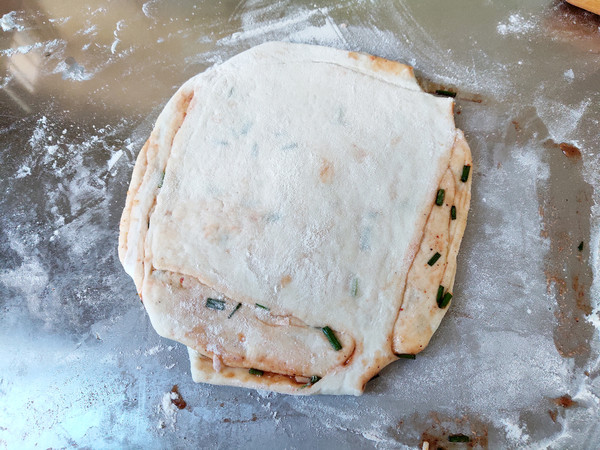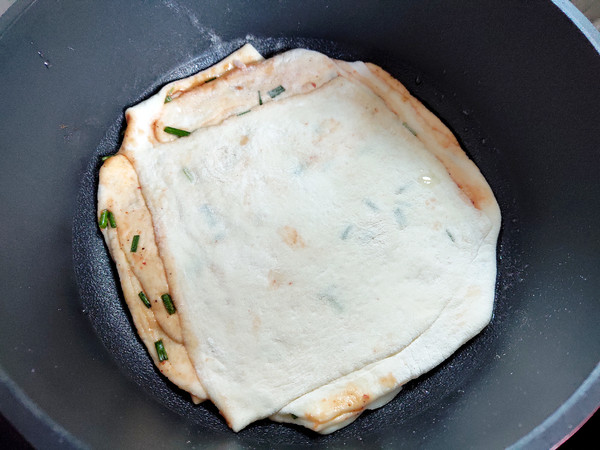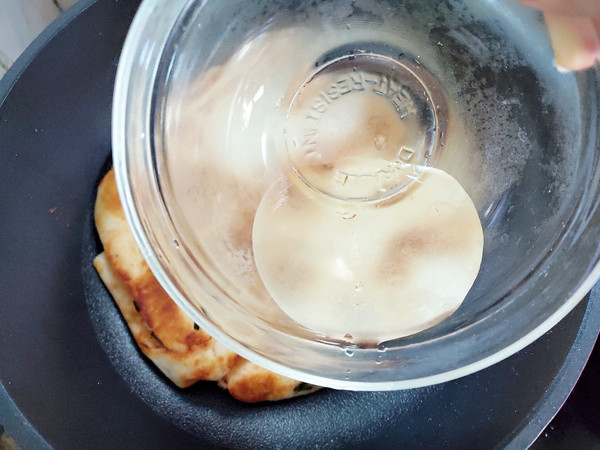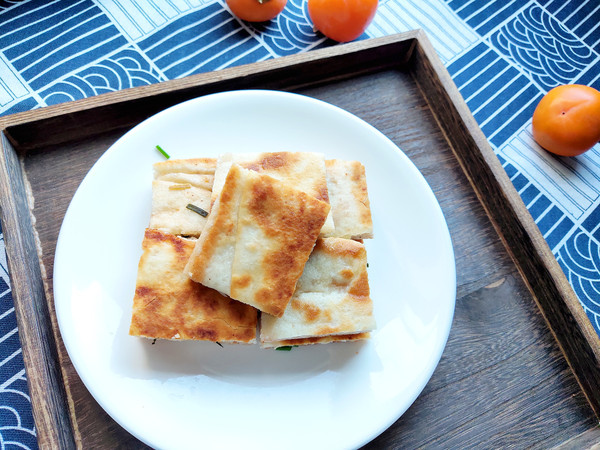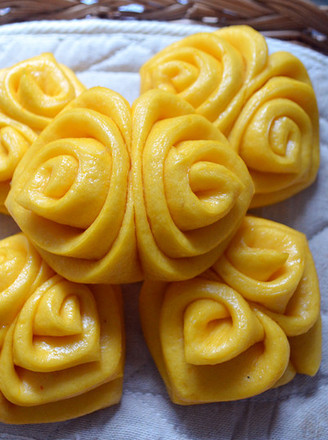Soy Sauce Biscuits
1.
Flour + oil + sugar + water + yeast are combined into a smooth and soft dough, covered with plastic wrap and refrigerated to ferment overnight.
2.
Early the next morning, take the dough out of the refrigerator to warm up for at least half an hour. The dough needs to be 2 times-2.5 times the size, you can peel it to see, if there are obvious large holes, it will be fermented.
3.
Sprinkle a thin layer of flour on the chopping board first, then take the dough out of the bowl, pat it flat to exhaust, fold it up and down left and right, repeat two or three times. The warmed dough is soft and easy to handle. If the dough feels a bit stiff, it means that the temperature is not enough, so don't move it and continue to warm it up.
4.
Rub the strips again, fold the left and right three times and then rub them again. Repeat two or three times.
5.
After kneading the dough a few times, cut a dough to see if there are no obvious large holes, just knead it in place, and it's fine. If there are always obvious large pores and the dough is still sticky, it means that the fermentation is not in place. In this case, you can roll the dough, cover it, and continue to ferment for a while.
6.
Take a bowl, add a spoonful of barbecue sauce, a spoonful of oyster sauce, a little allspice and salt, and mix well.
7.
Divide the previously kneaded dough into 2 portions, take 1 portion and roll it into a rectangular or round shape and brush with a thin layer of oil.
8.
Then brush with the previously mixed sauce. The sauce should not be spread too much. Sprinkle with a little green onion. Use a kitchen knife or spatula to divide into several portions, leaving at least one centimeter in between.
9.
Layer the dough pieces one by one, first fold it down from the top, then fold it to the left, and then repeat the fold from the top, right to left, to ensure that each layer has sauce.
10.
After stacking, roll out into a dough sheet about the size of a pan. Don't use too much force. I have a handicapped hand and I have never been able to make a good-looking dough.
11.
Brush a flat-bottomed non-stick pan with a layer of oil, then spread the rolled cakes and start frying on a medium-low heat.
12.
When one side is slightly charred, turn it over and fry the other side.
13.
After both sides are slightly charred, pour a small bowl of hot water along the side of the pot, cover the pot, turn to low heat and simmer until the water is dry. If you are afraid that the middle is too thick and not cooked enough, you can turn the cake over, add water and simmer until the water is dry.
14.
After the cake is baked, cut it into small pieces and eat it when it is not so hot.
Tips:
1. Temporary mixing and fermentation in the morning takes time, so I always make the noodles one night in advance and put them in the refrigerator for overnight fermentation. If the room temperature is very high, the noodles may have already started to ferment when making the noodles, so cover the noodles directly and put them in the refrigerator. If the room temperature is more than ten or twenty degrees Celsius, which is relatively cool, you can ferment for a while, and you can see that the fermenting is obvious, and then put it in the refrigerator. If the room temperature is below 10 degrees in winter, you don't need to put it in the refrigerator and ferment at room temperature.
2. When rolling the noodles, roll them round or square as you like, as long as you make sure that there is sauce in the middle of each layer when you stack it up at the end.

